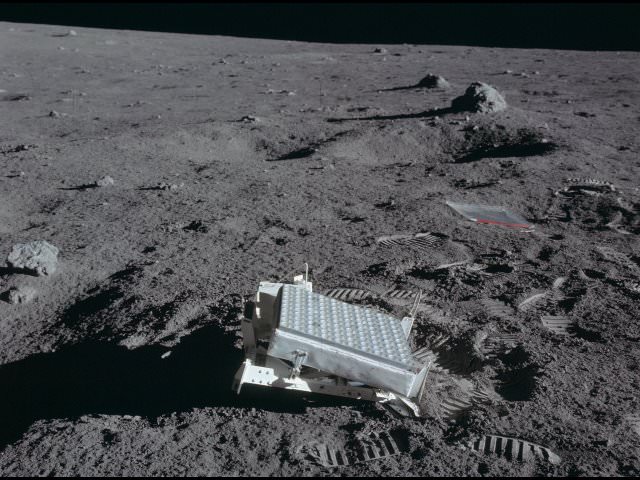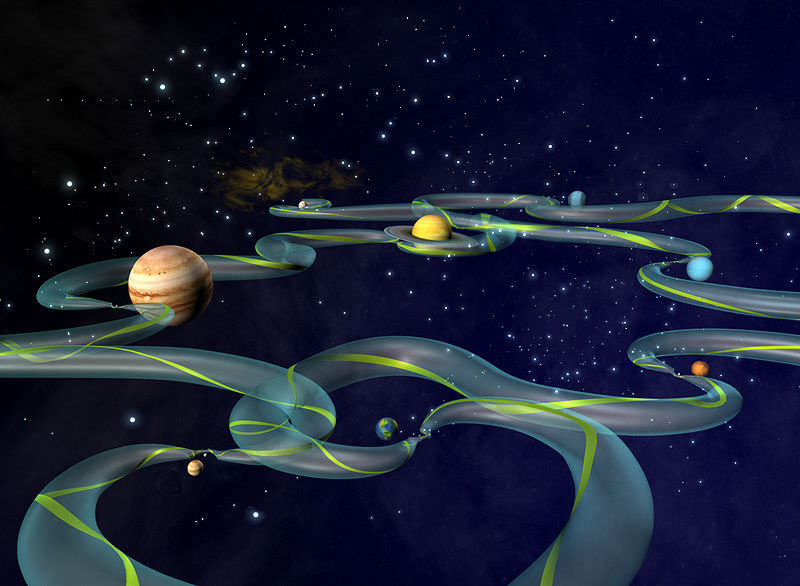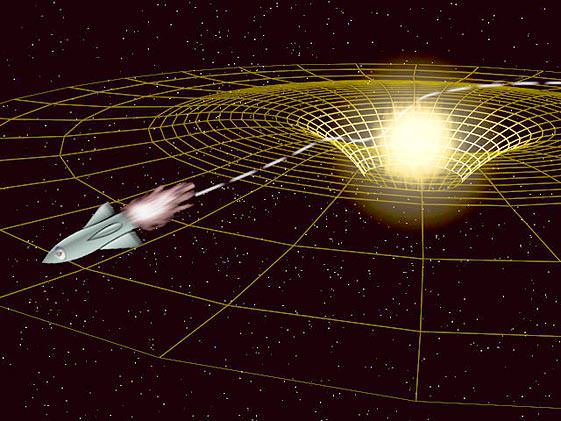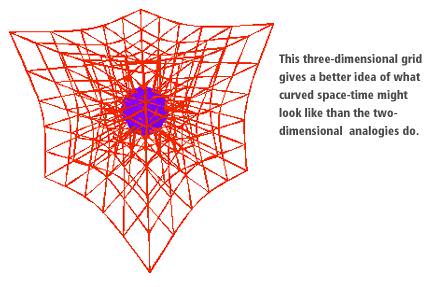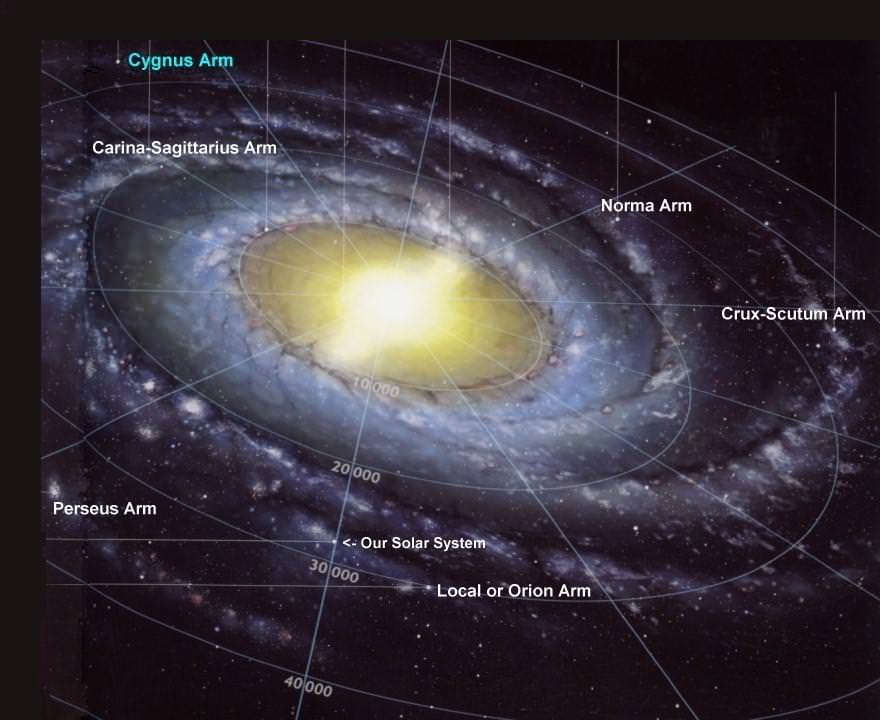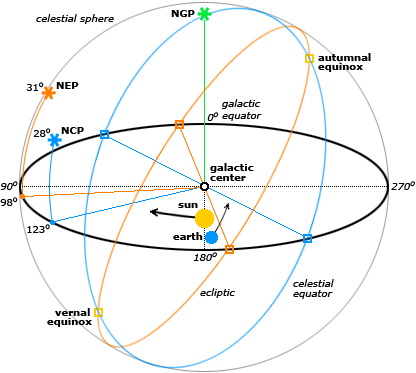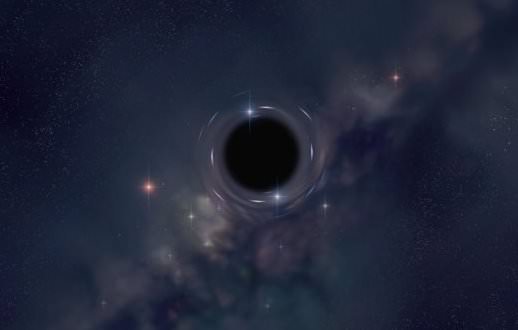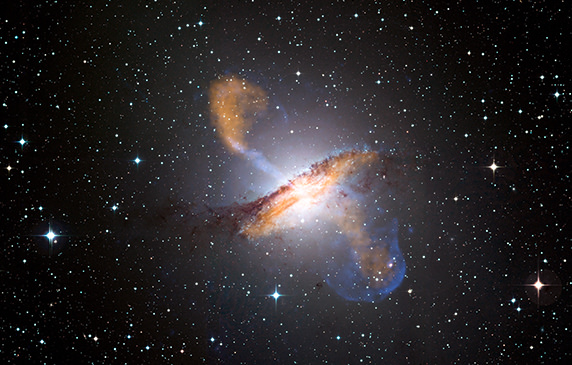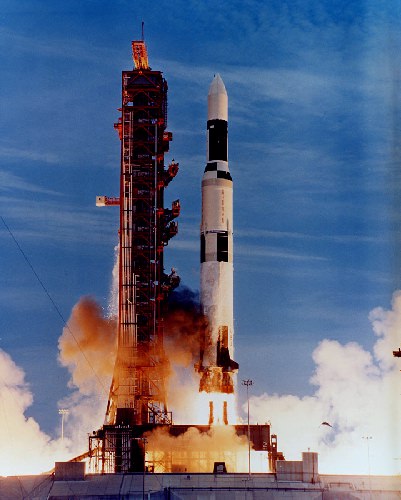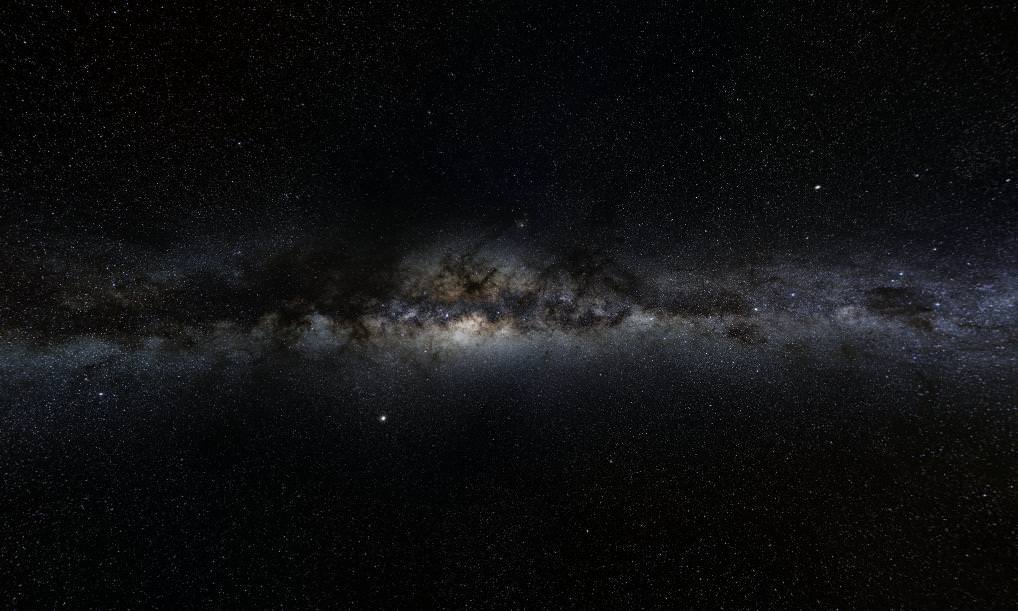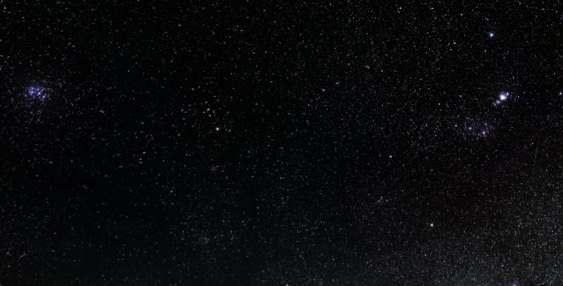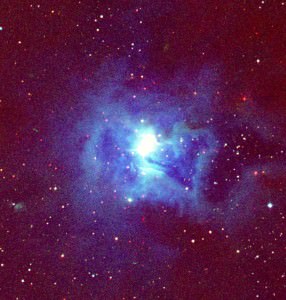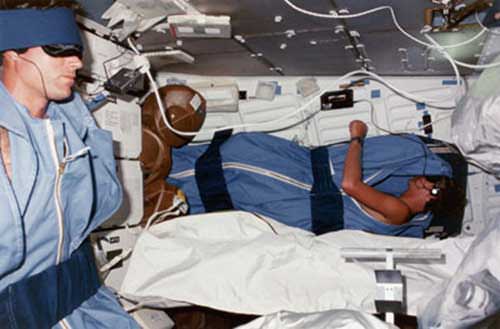Representing what may be the first long term lunar environmental impact study, recent laser ranging data from the Apache Point Observatory in New Mexico suggests the Lunar Ranging Retro Reflectors (LRRRs) left on the Moon by Apollo missions 11, 14 and 15 are beginning to shows signs of age.
Apache Point Observatory’s Lunar Laser-ranging Operation (the acronym says it all) has been collecting ranging data from the LRRRs since 2006, using a 3.5 metre telescope and a 532 nm laser.
A typical APOLLO observing session involves shooting the laser at the largest of the LRRRs (Apollo 15’s) over a ‘run’ of four to eight minutes. Each shot sends about 1017 photons to the Moon, from which only one returned photon per shot may be detected. This is why the laser is shot thousands of times at a 20 Hz repetition rate during each run.
If the return signal from the Apollo 15 LRRR is good, the laser is then directed to fire at the Apollo 11 and 14 reflectors. The laser can even be directed to the Russian Lunokhod 2 reflector, landed on the Moon in 1973, although this reflector does not return a reliable signal if it is in sunlight, probably because heating affects the reflectors’ refractive index and distorts the return signal.
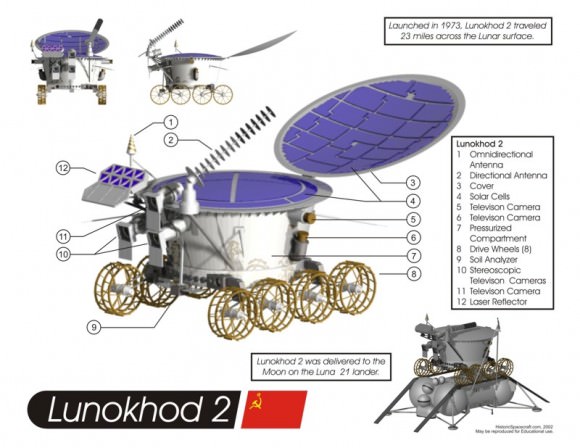
The Apollo LRRRs were designed to remain isothermal, even in direct sunlight, to avoid the problem apparently suffered by Lunokhod 2. But a review of current and historical data has revealed a noticeable decline in their performance at each Full Moon. Since the reflectors are directed straight at Earth, they experience the most direct sunlight at a Full Moon.
Recent Apache Point Observatory data has been compared to historical data collected by earlier observatories involved in lunar laser ranging. For the period 1973 to 1976, no Full Moon deficit was apparent in data records, but it began to emerge clearly in a 1979 to 1984 data set. The research team estimate that return signal efficiency at Full Moon has degraded by a factor of 15 over the approximately forty years since the Apollo reflectors were placed on the Moon.
While heating effects may play a part in the performance degradation of the LRRRs, lunar dust is suggested to be the more likely candidate, as this would be consistent with the very gradual performance degradation – and where the most substantial performance loss occurs right on Full Moon. These findings may require careful consideration when designing future optical devices that are intended to remain on the lunar surface for long periods.
On the bright side – all the reflectors, including Lunokhod 2’s, are still functioning on some level. Hopefully, decades before their slow and steady decline progresses to complete failure, even more efficient replacement devices will be landed on the lunar surface – perhaps carefully positioned by a gloved hand or otherwise by robotic means.
This article was developed from this very readable scientific paper.

